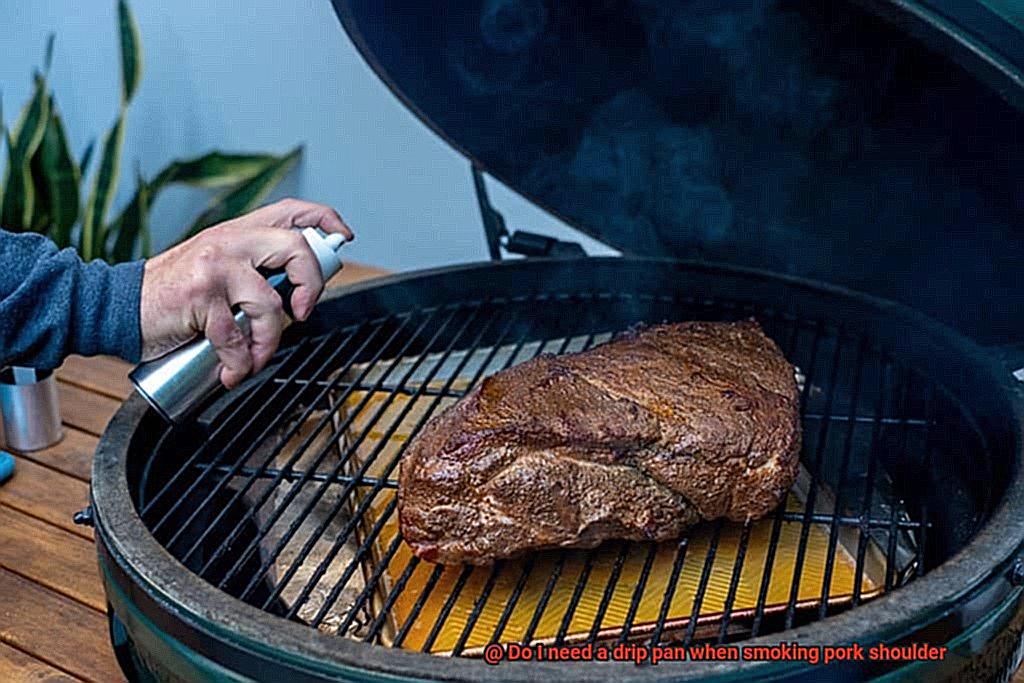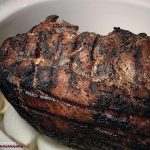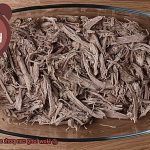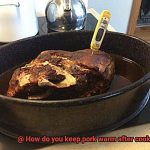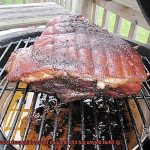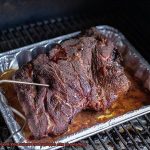Are you ready to embark on a mouthwatering journey of smoking pork shoulder for your next backyard party or family gathering? As an expert in the field, I’m here to help you make informed decisions about every aspect of the process, including whether or not to use a drip pan. So, let’s get down to business and answer the burning question: do you really need a drip pan when smoking pork shoulder?
Before we dive into the answer, let’s take a moment to understand why drip pans are essential. When cooking pork shoulder, fat and juices will inevitably drip off the meat while it cooks. Without a drip pan, these drippings can cause flare-ups, create a mess in your smoker, and even start a fire. However, collecting these juices in a drip pan can be used later to baste the meat, adding more flavor and moisture.
Now let’s address the real question at hand: do you need a drip pan when smoking pork shoulder? The short answer is no; it’s not always necessary. However, using a drip pan has many advantages. It helps maintain cleanliness in your smoker by catching all those flavorful drippings while also providing an opportunity to collect them for later use.
But before you run out and buy yourself a shiny new drip pan, there are some factors that may affect your decision. For instance, the type of smoker you’re using, personal preferences on smoke flavor intensity and how much time you have available for cleaning up after cooking.
In this blog post, we’ll discuss all these factors in detail so that by the end of it all – whether or not you choose to use one – you’ll feel confident that your pork shoulder will come out perfectly cooked with maximum flavor. So sit back with your favorite beverage and let’s dive deep into the world of smoking pork shoulder.
Contents
Benefits of Using a Drip Pan
While some swear by allowing the fat to drip directly onto the coals or wood chips, using a drip pan can provide several benefits that are hard to ignore.
Firstly, using a drip pan can help prevent flare-ups caused by dripping fat. Not only can these flare-ups burn your meat, but they can also be a safety hazard. By catching any excess juices and fats that drip from the meat during the smoking process, a drip pan can help reduce the risk of these dangerous flare-ups.
But the benefits don’t stop there. Using a drip pan can also help regulate the temperature inside your smoker. Juices and fats that drip onto the coals or heating element can cause sudden spikes in temperature that are difficult to control. By catching these drippings, a drip pan can help maintain a consistent temperature throughout the smoking process, resulting in perfectly smoked pork shoulder every time.
And let’s talk about flavor. The juices and fats that collect in the drip pan can be used to baste the meat during cooking, adding moisture and enhancing its overall flavor. You can even use these drippings to make a delicious sauce or gravy to serve alongside your pork shoulder.
Of course, there are some arguments against using a drip pan. Some believe that allowing the fat to drip directly onto the coals or wood chips can add flavor to the meat. And some smokers may not have enough space for a drip pan or may simply prefer not to use one.
Potential Drawbacks of Using a Drip Pan
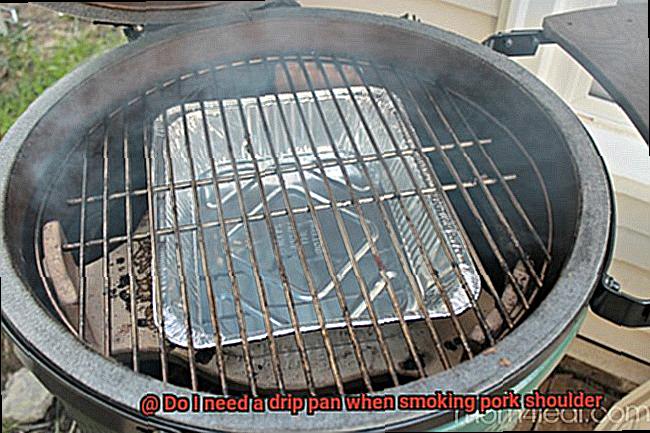
As a passionate smoker, you might be thinking about using a drip pan when smoking pork shoulder. While it can be a great option for some, there are potential drawbacks that you should consider before getting started.
One significant issue with using a drip pan is the impact it can have on the taste and quality of your meat. While the juices dripping from the meat into the pan can prevent dangerous flare-ups and help regulate temperature, they can also create steam that makes your meat soggy or bland. So, if you are looking for a crispy exterior and juicy interior, using a drip pan might not be the best option for you.
Another potential drawback is the hassle of cleaning a drip pan. The grease and debris that accumulate in the pan can be challenging to remove, leading to food safety issues and making it less effective over time. Therefore, if you decide to use a drip pan, make sure to clean it thoroughly after every use.
Finally, using a drip pan requires more attention and additional equipment than placing your meat directly on smoker grates. You must monitor the temperature of both the pan and meat separately, which can be time-consuming and complicated.
Factors to Consider When Deciding Whether or Not to Use a Drip Pan
If so, you may be weighing the pros and cons of using a drip pan. But fear not, for there are several factors to take into account that could make using a drip pan the right choice for your next smoking session.
First and foremost, consider the type of smoker you’re using. If it comes equipped with a built-in drip pan, it’s highly recommended to use it to ensure proper function and avoid potential damage to the smoker. Additionally, certain woods like hickory or mesquite can produce more grease and drippings than others, making a drip pan essential for preventing flare-ups and maintaining consistent heat.
Another crucial factor is the size of your pork shoulder. Larger cuts tend to produce more drippings, which means you’ll need a larger drip pan or several pans to catch all the excess grease.
Last but not least, personal preference is key. Some pitmasters prefer allowing the drippings to hit the coals or wood chips directly, as it adds more flavor and moisture to the meat. Others may favor a cleaner cooking process with minimal mess.
Different Types of Drip Pans Available for Smoking Pork Shoulder
Smoking pork shoulder is a delectable art form that requires attention to detail and patience. To achieve the perfect smoked pork, it’s crucial to use a drip pan to avoid any unwanted flare-ups and maintain consistent heat during the smoking process. However, with so many options available in the market today, it can be difficult to decide which drip pan is best suited for your requirements.
One of the most popular options for a drip pan is an aluminum foil pan. These pans are affordable, easily disposable, and convenient for most people. They are readily available at grocery stores and can be conveniently discarded after use. Alternatively, a disposable aluminum tray provides a larger surface area for catching drippings and can be reused several times before requiring replacement.
For those seeking a more sustainable option, reusable stainless steel drip pans are an excellent choice. These pans are environmentally friendly and can be washed and used repeatedly, making them a more eco-conscious alternative. Moreover, they come in various sizes and shapes, allowing you to customize based on the size of your smoker or grill.
Some smokers come with built-in drip pans or trays that are specifically designed for that particular model. These pans are usually made of stainless steel or cast iron and can be removed for easy cleaning.
Tips for Successfully Using a Drip Pan
Using a drip pan when smoking a pork shoulder can make all the difference in keeping your meat moist and tender. But how do you use a drip pan successfully? Here are five tips to help you out:
Choose the right size drip pan
A crucial step in using a drip pan is making sure it’s large enough to catch all of the drippings from the meat. You don’t want it to overflow and cause a mess in your smoker. Using a disposable aluminum pan can make cleanup a breeze.
Add liquid to your drip pan
Adding liquid to your drip pan can help keep your pork shoulder moist and add some extra flavor. Consider using apple juice, beer, or water for some delicious results.
Monitor the liquid level
It’s important to keep an eye on the liquid level in your drip pan throughout the cooking process. If the liquid runs dry, it could cause your meat to dry out as well. So be sure to check on it periodically.
Use indirect heat
Cooking with indirect heat means placing the meat on one side of the smoker and the drip pan on the other side. This avoids any flare-ups caused by dripping fat and ensures that your meat stays perfectly cooked.
Let it rest
Finally, once your pork shoulder is cooked to perfection, let it rest for at least 30 minutes before slicing it. This allows the juices to redistribute throughout the meat, making it even more flavorful and juicy.
Cleaning and Maintenance of the Drip Pan
One crucial detail that often gets overlooked is the cleaning and maintenance of your drip pan.
Let’s start with a quick refresher on the drip pan’s purpose. It’s located underneath the meat being smoked and catches any juices or fats that may drip down during the smoking process. This not only prevents flare-ups but also keeps your smoker clean and functioning properly.
However, over time, if these liquids are left to accumulate in the drip pan, they can cause grease buildup and other debris that can affect the performance of your smoker. That’s why it’s crucial to regularly clean and maintain your drip pan.
Depending on the type of smoker you’re using, the cleaning method may vary. Some drip pans are removable and dishwasher safe, while others require hand washing with soap and water. Regardless of the method, make sure to clean your drip pan after every use to prevent any buildup of grease or other debris.
Now let’s talk about what can happen if you choose not to use a drip pan when smoking pork shoulder. The drippings hit the coals or heating element directly, causing more smoke and heat fluctuations. This can result in a less consistent cooking temperature and possibly even unevenly cooked meat.
IYjQBVTiYDM” >
Conclusion
In conclusion, the decision to use a drip pan when smoking pork shoulder is not cut and dry. While it can help prevent flare-ups and add flavor to the meat, there are potential downsides such as soggy or bland meat and the hassle of cleaning up. However, with careful consideration and proper usage, a drip pan can be a valuable tool in your smoking arsenal.
When considering whether or not to use a drip pan, take into account factors such as smoker type, personal taste preferences, and the size of your pork shoulder. There are various types of drip pans available including disposable aluminum options, reusable stainless steel pans, and built-in trays.
To make the most out of your drip pan usage, choose the right size to catch all drippings from the meat, add liquid for extra flavor and moisture, monitor liquid levels throughout cooking process to avoid drying out meat, use indirect heat to avoid flare-ups caused by dripping fat and let it rest before slicing.
It’s also crucial to keep your drip pan clean in order to prevent grease buildup that can affect your smoker’s performance. In summary: using a drip pan when smoking pork shoulder offers many benefits but requires careful consideration; choose from different types of available options; follow tips for successful usage; clean and maintain your drip pan regularly.

